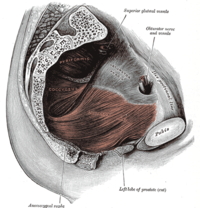
Photo from wikipedia
Chronic pelvic pain affects 2.1% to 24% of the global female population,12 and up to half of the affected women have no obvious pathology.23 The neuromodulator gabapentin can be used… Click to show full abstract
Chronic pelvic pain affects 2.1% to 24% of the global female population,12 and up to half of the affected women have no obvious pathology.23 The neuromodulator gabapentin can be used to modulate pain, but the evidence for its effectiveness and safety is limited, as discussed by Andrew Horne and colleagues in a related article (doi:10.1136/bmj.j3520). Here, James Duffy explores how we should manage women with unexplained chronic pain in light of this uncertainty.
Journal Title: British Medical Journal
Year Published: 2017
Link to full text (if available)
Share on Social Media: Sign Up to like & get
recommendations!